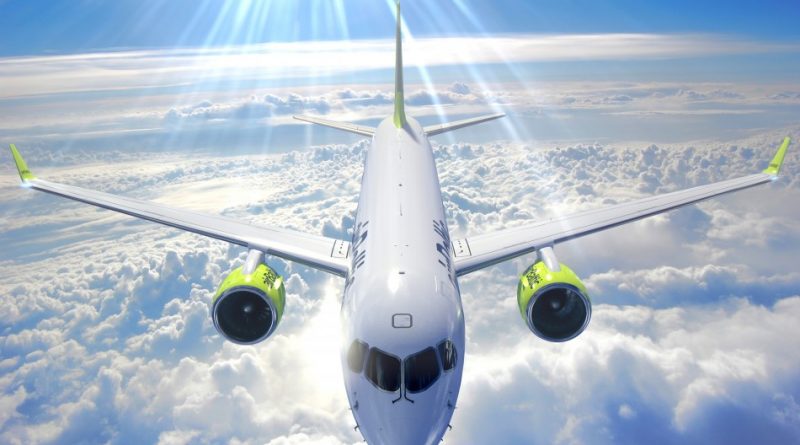Les CS300 d’Air Baltic retournent en service graduellement
Air Baltic a publier un communiqué ce matin afin d’annoncer le retour en service graduel des CS300 sans fournir d’explications quand à la nature du problème qui a incité l’entreprise à faire une inspection préventive sur tous les moteurs PW1524G de sa flotte. Remarquez qu’il s’agit d’une situation qui arrive plus fréquemment avec des avions de conception récente. C’est en partie à cause de cela que les compagnies aériennes demandent de forts escomptes pour être les premiers clients à mettre un nouvel avion en service.
Voici le communiqué d’Air Baltic
October 12, 2017
airBaltic on CS300 aircraft
Riga. Currently airBaltic has already restarted performing commercial flights with the CS300 aircraft, and it is expected that during today other aircraft will be inspected and ready for commercial flights. Aircraft that have restarted flying are in full order and completely safe for performing flights.
airBaltic is working in close cooperation with aircraft manufacturer Bombardier and engine manufacturer Pratt & Whitney. Additional inspections are carried out in order to ensure the safety of the CS300 aircraft as well to perform the necessary upgrades to the aircraft.
airBaltic has so far received seven brand new Bombardier CS300 aircraft on its fleet. As the launch customer of CS300, airBaltic is aware that during the introduction stage of the aircraft additional upgrades are yet to be expected. On a daily basis airBaltic works in close cooperation with the aircraft and engine manufacturers in order to provide their successful operation.
airBaltic’s top priority is safety, and CS300 introduction strategy already envisaged additional attention as well as reserve aircraft availability in case one of the new aircraft could not perform a flight.
Similarly, to other technology sectors, also in aviation there are certain technical nuances that are characteristic to new equipment that require additional attention and upgrades during the initial stages of exploitation. CS300 is not an exception and similarly to all new aircraft their introduction requires additional attention concerning the harmonization between different manufacturer parts and systems.
The operational results and exploitation of the new aircraft has so far been successful. Aircraft have shown very good results, fuel efficiency and convenience to both passengers and the staff. CS300 aircraft saves up to 21% fuel compared to the other aircraft on airBaltic fleet. On average, each aircraft spends between 85 and 95 hours in the air every week.
For the technical diagnostics of the CS300 aircraft airBaltic uses Bombardier innovative FlightLink technology that reports on the aircraft’s operational indicators to the technician team electronically. FlightLink has helped airBaltic to increase company’s efficiency and ordering the necessary reserve parts for different technical upgrades.
The new CS300 aircraft with 145 seats, offers excellent flying experience with benefits for passengers such as wider seats, larger windows, more hand luggage space in the cabin, improved lavatories, and other. It truly manages to please every passenger and make their wishes come true. New aircraft is also much quieter – with four times smaller noise footprint. Moreover, it is the greenest commercial aircraft in the world, as it is the first aircraft to have a transparent declaration of the life-cycle environmental impact, helping to reduce CO2 and NOX emissions by 20% and 50% respectively.
airBaltic serves over 60 destinations from its home base in Riga, Latvia. From every one of these locations, airBaltic offers convenient connections via Riga to its network spanning across Europe, Scandinavia, the CIS and the Middle East. In addition, airBaltic also offers direct flights from Tallinn and Vilnius.
>>> Suivez-nous sur Facebook et Twitter


Un communiqué d’Air Baltic en langue de bois qui signifie qu’ils ne veulent pas expliquer la nature du problème.
Il me semble que sa serait si simple de donner une explication. C’est pire de rien dire, toutes sortes de spéculations vont bon train déjà sur le wed. Un doute peu s’installer sur la fiabilitée des moteurs. Les transporteurs manques souvent de pif…..enfin c’était sans doute préventif puisque les C Series sont retourner en vol. Et Swiss Air n’a pa mentionné d’arrêt de vol pour ces C Series. Peut-être qu’on aura un communiqué d’Air Baltic bientôt, quand ils seront en mesure de donner plus de détails.
Le 11 octobre, la journée de l’annonce de la pause, 3 CS300 ont fait 6 vols pendant 14 heures 12 minutes.
Le 12 octobre, reprise des vols, 5 CS300 ont fait 11 vols pour une durée de 23 heures 41 minutes.
Pour se donner une idée d’une journée normale, le 10 octobre, 6 CS300 ont fait 29 vols pour une durée de 69 heures 15 min.